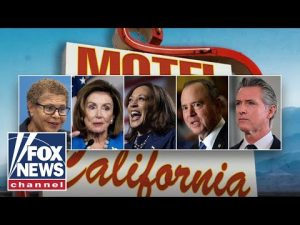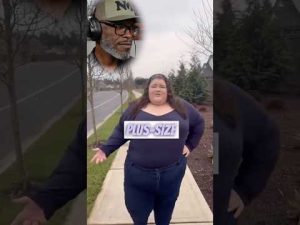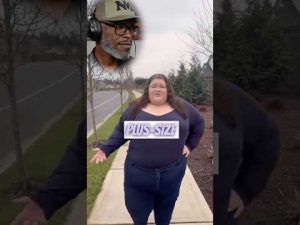In the bustling streets of Los Angeles, chaos reigned for a third consecutive day, as protestors and law enforcement clashed amidst a haze of smoke and sound. The California National Guard, federalized in response to escalating tensions, found themselves as participants in this urban spectacle. Armored vehicles and uniformed personnel faced an angry crowd armed with bottles, rocks, and high emotions. The setting seemed like something out of a dystopian novel, yet there it was, all too real and happening live in one of America’s largest cities.
Mayor Karen Bass of Los Angeles had just concluded a news conference, pointing a determined finger of blame at the Trump administration. According to her, their decision to send in the National Guard had only fanned the flames of unrest. While it’s common for politicians to pass the buck, perhaps this bold narrative conveniently overlooked the fact that local law enforcement was struggling to keep the peace long before federal troops arrived. The situation had seemingly grown beyond the capacity of the local police, likening downtown to an urban war zone.
One could argue, as some experts have, that sending in the National Guard might not have been the finest choice, potentially akin to bringing a firecracker to a fireworks show—certainly eye-catching but ultimately insufficient and possibly aggravating. Yet the Trump administration, in their defense, posited that action was required when state officials appeared less than proactive. With businesses vandalized and residents watching in fear, the federal call to action wasn’t entirely without reason, albeit it might have been clunky rather than cunning in its execution.
Governor Gavin Newsom and his allies have argued that local forces could handle the situation independently and called for the removal of federal troops. But as anyone tuning into live broadcasts could observe, it didn’t appear that control was completely theirs to claim. Night falls often bring more violence, and this event was no exception. The anticipation of something worse brewing as darkness fell was almost palpable. In this way, the city seemed like a boiling pot, lid clattering, hoping not to spill over but making little promise to contain itself.
Meanwhile, former Vice President Harris weighed in, criticizing the federal troop deployment as a dangerous, calculated maneuver orchestrated to sow division. As the battle of narratives raged alongside the physical confrontation on the streets, one thing was painfully clear: sweeping actions like federal intervention rarely offer the delicate touch needed in complex socio-political situations. The sad irony here is that both sides claim a desire for peace and resolution while continuing to hurl blame and judgment. In the end, behind this curtain of political theater, the real victims remain the community’s residents and business owners caught in the crossfire of poor leadership and hardened rhetoric.







